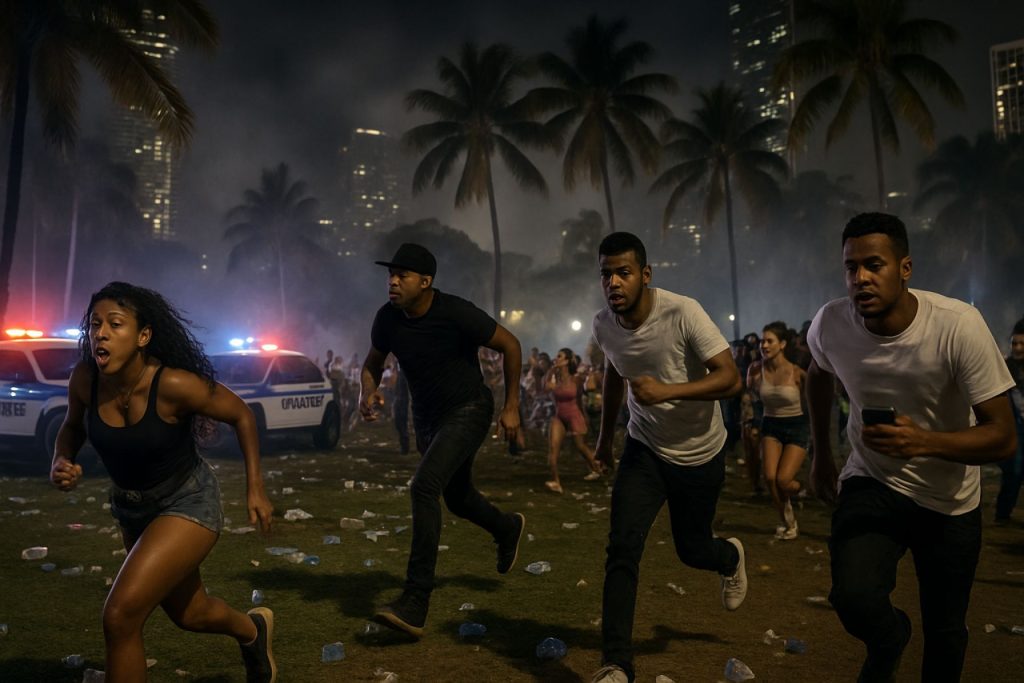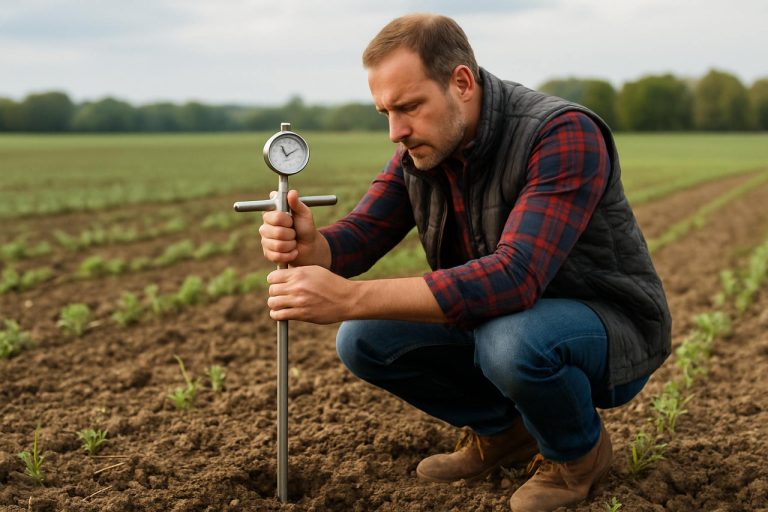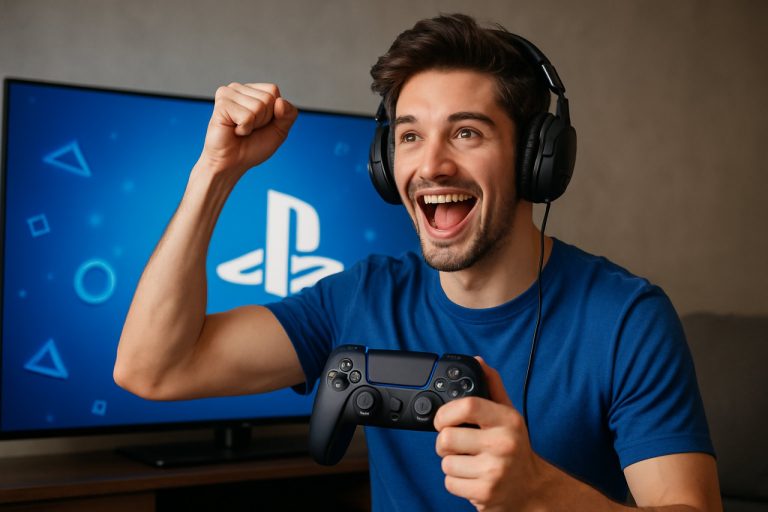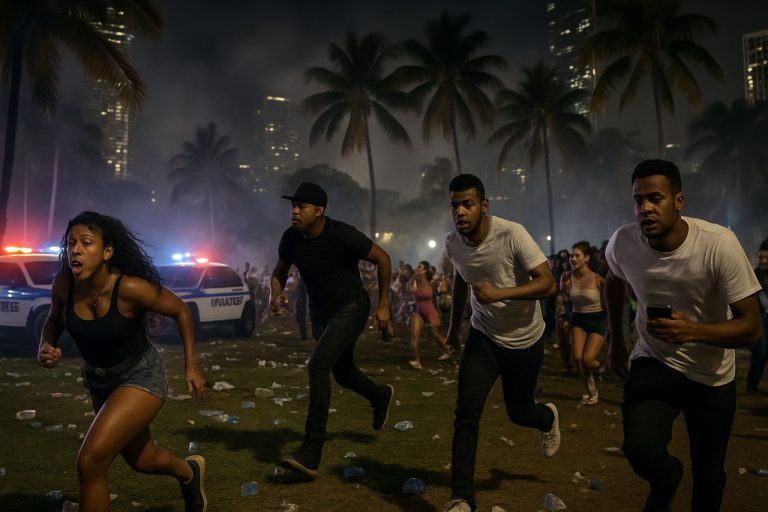
- A routine traffic stop near a downtown Miami festival escalated, resulting in a young man being shot by police.
- The incident began when a vehicle driven by Menelek Clarke allegedly made contact with an officer during heavy event congestion.
- Eyewitness accounts differ; Clarke’s family insists the event was a tragic accident with no weapons involved.
- The Florida Department of Law Enforcement and local authorities have launched a detailed investigation into the shooting.
- The event has sparked urgent community discussions about public safety, accountability, and police-citizen interactions during high-pressure situations.
A sizzling Miami Sunday turned tense when what began as a hunt for a parking spot spiraled into chaos, leaving a young man wounded and a community asking hard questions.
Crowds thronged downtown Miami, drawn by the pulse of the Best of the Best concert. The streets pulsed with music, car horns, and shouts—until sirens carved a new rhythm into the night. Beneath the neon glow of Biscayne Boulevard, a traffic stop ignited a chain reaction that no one saw coming.
As police directed traffic near Bayfront Park, a vehicle inched through the maze—inside, Menelek Clarke, just 21, and his sister, Sherylann, navigated the festival congestion. Police hand signals flickered through the crowd. Confusion met compliance, and then suddenly, a shot rang out. Menelek’s car, caught in the gridlock, allegedly made contact with an officer directing vehicles. The situation escalated in a blink: the officer discharged his weapon, hitting Menelek multiple times.
Onlookers scattered, covering their heads—and in that instant, Miami’s air of celebration grew heavy. Sherylann, shaking in the aftermath, described their shared terror as her brother slumped beside her. She insisted that the contact with the officer had been an accident, the result of misread cues and a tangle of moving parts. Days later, Menelek remains at Jackson Memorial Hospital, his recovery measured in cautious optimism and nervous phone calls. The family, relieved he is now able to speak, insists he wasn’t armed.
Authorities, including the Florida Department of Law Enforcement, have launched a thorough investigation. As the city sifts through conflicting stories and searches for clarity, questions fly: How do snap decisions in high-pressure situations rewrite lives in seconds? What safeguards exist for both those who serve and the people they encounter on a routine night out?
Miami, famed for its vibrant culture and electric nights, now finds its own pulse interrupted by echoes of gunfire and uncertainty. The incident is more than a headline—it’s a reminder of the fine line between order and chaos on America’s bustling streets.
Key takeaway: Miami’s recent episode underscores the profound impact of split-second actions involving police and citizens. As investigators work to uncover the full story, the city looks toward accountability and conversation—seeking answers that protect both public safety and the rights of all residents.
For more on the evolving story and broader issues of law enforcement and community, visit Miami’s official website or Florida Department of Law Enforcement.
Miami Shooting Shocks City: Insider Facts, Expert Tips & The Critical Questions You Need Answered Now
Incident Overview
A routine parking hunt at the Best of the Best concert in downtown Miami turned tragic when a police officer shot Menelek Clarke, 21, after a confused traffic moment. As the city reels, questions about police use of force, public safety, and the rights of citizens surge to the forefront.
—
Additional Facts You Need to Know
1. Florida’s Use of Force Protocols
– Florida law (Florida Statutes 776.05) allows police to use deadly force to prevent death or serious injury, but only if the threat appears imminent and unavoidable.
– The Florida Department of Law Enforcement (FDLE), which is investigating, is required to review evidence, body cam footage, and witness accounts before determining if the officer’s actions were justified.
2. Officer Training & Body Cameras
– Most Miami officers are equipped with body cameras. According to Miami Police Department policy, these must be activated during all law enforcement encounters.
– Body cam transparency plays a critical role in investigations, yet footage is often withheld during ongoing probes.
3. Public Event Security Measures
– Large Miami events typically employ both uniformed and plainclothes officers for crowd and traffic control.
– Vehicle-related police incidents often occur in congested conditions, underscoring the importance of clear communication between officers and civilians.
4. Medical Response & Trauma Care
– Jackson Memorial Hospital is one of the nation’s leading trauma centers, known for expertise in gunshot wound treatment and recovery protocols.
– Early reports suggest Menelek Clarke’s injuries, while serious, are not life-threatening—a testament to rapid emergency medical response.
5. Legal Rights After a Police Shooting
– Victims (or families) are entitled to request internal affairs investigation, seek legal counsel, and obtain incident reports from authorities.
– The City of Miami offers victim support programs (learn more via the Miami city portal).
6. The Numbers Behind Police Shootings
– According to mappingpoliceviolence.org, Florida consistently ranks among the top U.S. states for police-involved shootings.
– Experts agree that ambiguity in high-pressure moments, especially at loud, crowded events, heightens risks for tragic misunderstandings (source: Police Executive Research Forum).
—
How-To Steps: Staying Safe During Traffic Stops at Events
1. Keep Hands Visible: Place hands on the wheel and avoid sudden movements.
2. Communicate Clearly: If you’re confused by signals, calmly ask the officer for clarification.
3. Do Not Exit the Vehicle unless instructed.
4. Comply Promptly: If stopped, follow directions and explain any uncertainty.
5. Record Interactions if Legal: Florida allows recording in public places—ensure your phone is within view but do not reach suddenly.
—
Real-World Use Cases
– In Miami, incidents like this have propelled reforms in officer training and community policing since 2015.
– Other U.S. cities (e.g., Dallas, Seattle) have seen success reducing misunderstandings at events via joint civilian-police advisory boards.
—
Market Forecasts & Industry Trends
– Investments in police technology (such as body cams and AI analysis) are projected to grow by 15% annually through 2026 (source: Grand View Research).
– Civilian demand for accountability drives policy reforms nationwide—expect a rise in independent oversight committees.
—
Pros & Cons Overview: Policing Crowded Events
Pros:
– Increased police presence can prevent major disturbances.
– Quick access to emergency aid.
Cons:
– High-pressure, noisy environments increase miscommunication risks.
– Rapid escalation can lead to irreversible outcomes.
—
Controversies & Limitations
– Critics argue that even with training, officers can make biased split-second decisions, disproportionately affecting youth and minorities.
– Body cam footage, while critical, is sometimes withheld or redacted, fueling public distrust.
—
Security & Sustainability
– Police events use resources intensively, with sustainability efforts focusing on crowd management, incident de-escalation, and better mental health training.
– Partnerships with local trauma centers and crisis counselors support after-incident care.
—
Pressing Reader Questions: Quick Answers
Q: Was Menelek Clarke armed or threatening?
A: According to family and initial reports, Clarke was unarmed and compliant. Investigation is ongoing.
Q: Are police shootings increasing at Miami events?
A: While Miami has seen isolated incidents, data shows the overall trend remains steady, but each case renews calls for caution and oversight.
Q: How can citizens advocate for safer policing?
A: Attend city council meetings, demand public release of incident footage, and support initiatives for police-community dialogue.
—
Actionable Recommendations & Tips
– If attending a Miami event, review city safety advisories and know your rights.
– In tense traffic situations, communicate clearly and follow officer directions, but remember you can calmly assert your rights.
– Advocate for more visible communication protocols at large events.
For authoritative updates, visit the Florida Department of Law Enforcement or the official Miami city government site.
—
Conclusion:
This Miami shooting serves as a sobering wake-up call on how quickly confusion at public events can turn catastrophic. Staying informed, understanding your rights, and advocating for clear police-citizen communication can help keep Miami’s vibrant nights both lively and safe.



